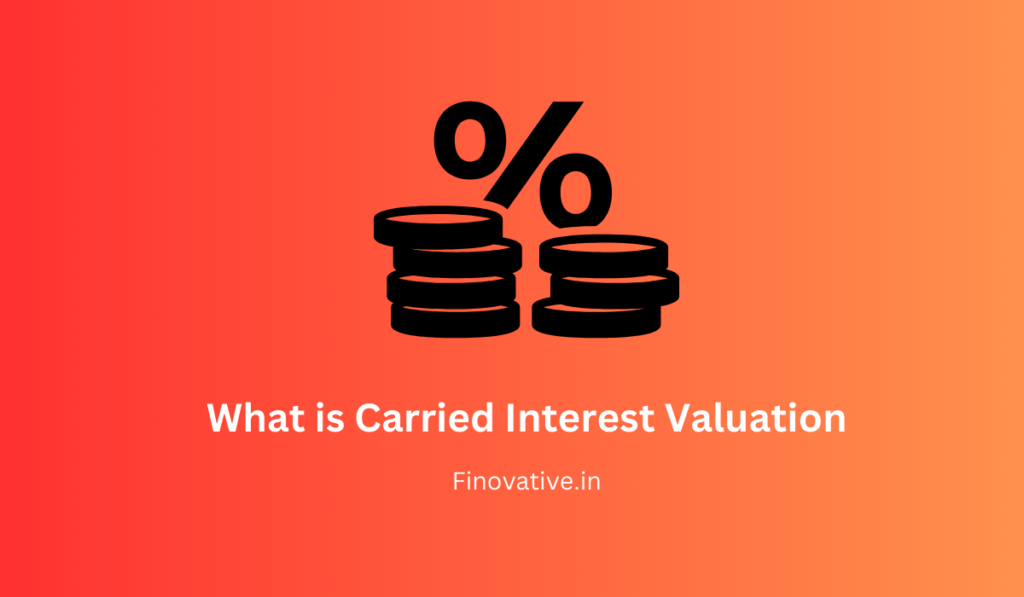Carried interest valuation, often called “carry,” is a complex financial concept that plays a crucial role in private equity and venture capital. This compensation structure has drawn significant attention and sometimes controversy, particularly in discussions about income inequality and investment profits. This comprehensive guide will delve deep into the concept of carried interest valuation, its mechanics, historical context, and its impact on the financial industry.
What is Carried Interest Valuation?
Carried interest valuation is a form of performance-based compensation that is prevalent in the private equity and venture capital industries. It represents the share of profits that fund managers receive from the successful investments they make on behalf of their investors.
At its core, carried interest is a way to align the interests of fund managers with those of their investors. It incentivizes fund managers to make profitable investments by allowing them to share in the financial gains generated by the fund.
Here’s how it works:
- Fund Formation: A private equity or venture capital fund is created, typically with commitments from various investors, including institutional investors, high-net-worth individuals, and sometimes even the fund managers themselves.
- Capital Deployment: The fund managers deploy the capital raised from investors to invest in various assets, such as private companies, real estate, or other alternative investments.
- Profit Generation: When these investments generate profits, a portion of those profits is allocated to the fund managers. This portion is the carried interest.
- Distribution: Carried interest is distributed to the fund managers once certain performance thresholds, known as “hurdles,” are met. These hurdles are usually based on a predefined rate of return (often called the “preferred return”) that investors expect to earn before fund managers receive their share of profits.
- Profit Split: After the hurdles are surpassed, profits are typically split between investors and fund managers, with the fund managers receiving a predetermined percentage of the excess profits as carried interest.
It’s important to note that carried interest is distinct from the management fees that fund managers charge investors for managing the fund. Management fees are usually a fixed percentage of the total assets under management and are intended to cover the fund’s operational costs, including salaries and expenses.
The Mechanics of Carried Interest
To understand carried interest better, let’s break down its key components and mechanics:
1. Profit Threshold (Hurdle Rate)
The hurdle rate is the minimum rate of return that investors expect to receive before the fund managers are entitled to any carried interest. It serves as a benchmark to ensure that fund managers are rewarded for generating returns above and beyond what investors could have earned through less risky investments.
Typically, the hurdle rate is set at a level that aligns the interests of investors and fund managers. For example, if the hurdle rate is 8%, it means that investors are entitled to receive an 8% return on their investment before any carried interest is distributed to fund managers.
2. Carry Percentage
The carry percentage, often referred to as the “carry,” represents the share of profits that fund managers receive once the hurdle rate is surpassed. It is usually expressed as a percentage of the excess profits, meaning the profits that exceed the hurdle rate.
Common carry percentages range from 15% to 30%, although they can vary based on the specific terms negotiated between the fund managers and investors. The higher the carry percentage, the larger the share of profits that goes to the fund managers.
3. Clawback Provisions
To prevent fund managers from receiving excessive carried interest in the early stages of a fund, many agreements include clawback provisions. These provisions require fund managers to return a portion of their carried interest if, over the life of the fund, the total profits do not meet or exceed the hurdle rate.
Clawback provisions are designed to ensure that fund managers do not benefit unfairly from the timing of their investments and distributions. If, for example, a fund experiences losses in its later years that result in a cumulative return below the hurdle rate, the fund managers may have to reimburse some of their carried interest.
4. Catch-Up Provision
In some carried interest structures, there is a catch-up provision that allows fund managers to receive a larger share of profits until they “catch up” to the agreed-upon percentage. Once they have received their share up to the agreed-upon percentage, the remaining profits are split between the fund managers and investors according to the carry percentage.
For example, if the carry percentage is 20%, and there is a catch-up provision, the fund managers might receive 100% of the profits until they reach a 20% share, after which the remaining profits are split 80% to investors and 20% to the fund managers.
5. Investor Preferences
Investors in a fund may have varying preferences regarding carried interest terms. Some may prioritize lower management fees in exchange for a higher carry percentage, while others may prefer the opposite. Negotiating carried interest terms is an important part of fund formation and can vary from one fund to another.
Historical Context of Carried Interest
Carried interest is not a new concept; it has historical roots dating back to the early days of the private equity industry. However, it gained more widespread attention and scrutiny in the 2000s and became a topic of political and economic debate.
Early Origins
The concept of carried interest can be traced back to the origins of venture capital and private equity investing in the mid-20th century. It was a way to incentivize fund managers to actively manage investments and maximize returns for investors.
Tax Treatment
One of the key issues that brought carried interest into the spotlight was its favorable tax treatment. In many countries, including the United States, carried interest has historically been taxed at capital gains rates rather than ordinary income rates. This tax treatment allowed fund managers to pay lower taxes on their share of profits, leading to debates about fairness and income inequality.
Public Perception and Regulation
As private equity and venture capital grew in prominence, carried interest became a subject of public interest and scrutiny. Some argued that fund managers were benefiting disproportionately from favorable tax treatment, while others defended the practice as a necessary incentive for risk-taking and investment.
In response to public and political pressure, some countries introduced regulatory changes to the taxation of carried interest. For example, in the United States, the Tax Cuts and Jobs Act of 2017 introduced certain limitations on the preferential tax treatment of carried interest for certain types of investments.
Criticisms and Controversies
Carried interest has faced criticism and controversy on several fronts:
- Tax Treatment: Critics argue that the favorable tax treatment of carried interest allows fund managers to pay lower taxes on their earnings compared to what they would pay if the income were classified as ordinary income.
- Income Inequality: Some view carried interest as contributing to income inequality, as it can result in substantial wealth accumulation for fund managers while the tax benefits may not be available to the broader population.
- Alignment of Interests: There are debates about whether carried interest always effectively aligns the interests of fund managers and investors. Some argue that the structure can create incentives for short-term gains at the expense of long-term sustainability.
- Transparency: Critics have called for greater transparency in carried interest arrangements, suggesting that investors should have a clearer understanding of the fees and compensation structures in private equity and venture capital funds.
Final words
Carried interest valuation is a complex and multifaceted concept that plays a pivotal role in the world of private equity and venture capital. It serves as a mechanism for aligning the interests of fund managers with those of their investors, incentivizing them to make profitable investments while also introducing complexities and debates surrounding its taxation and fairness.
As the finance industry continues to evolve, the debate over carried interest is likely to persist. Policymakers, investors, and fund managers will continue to grapple with questions of taxation, regulation, and the role of compensation structures in shaping investment behavior. Understanding the nuances of carried interest is essential for anyone involved in private equity, venture capital, or finance in general, as it remains a significant and evolving component of the financial landscape.


